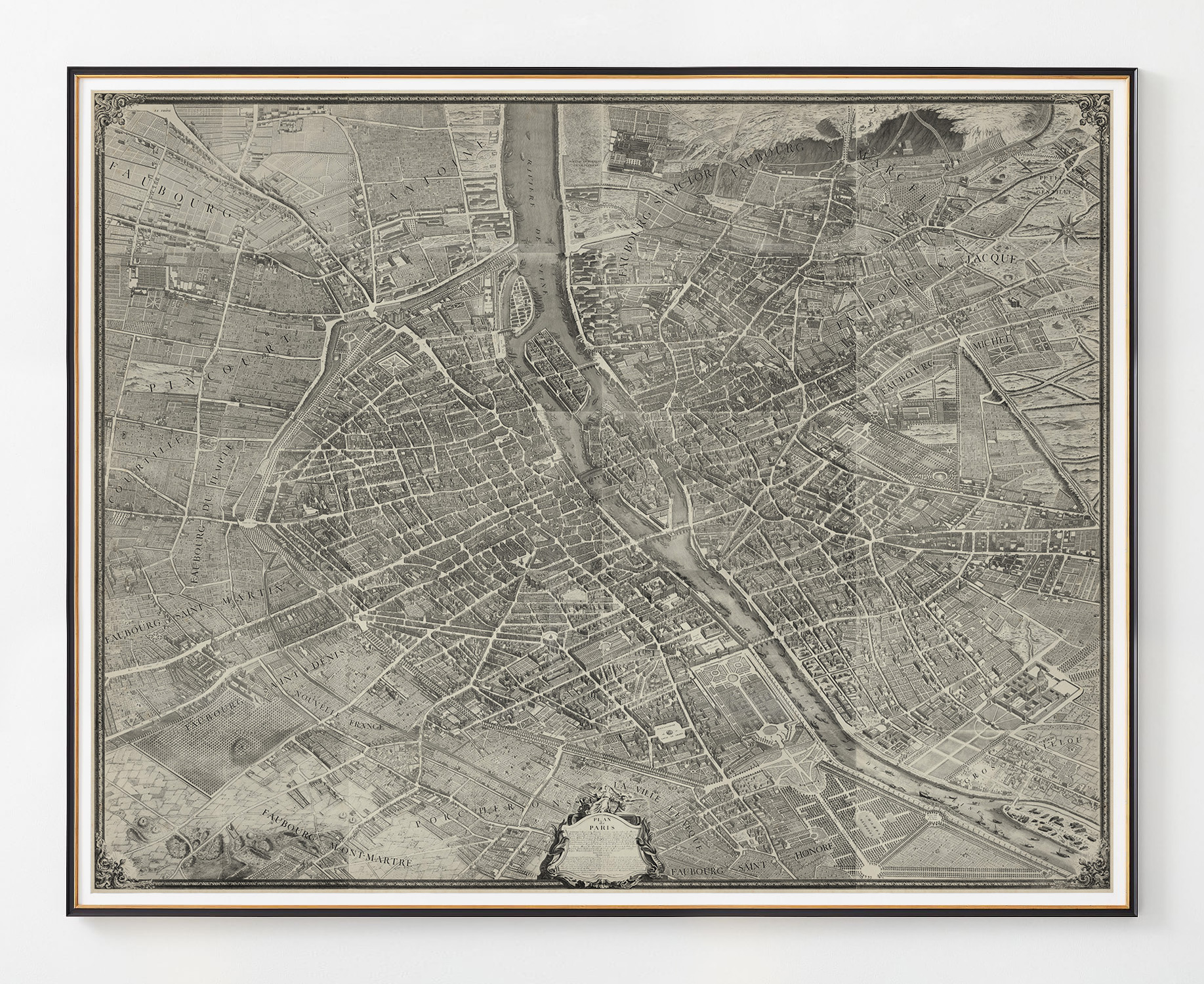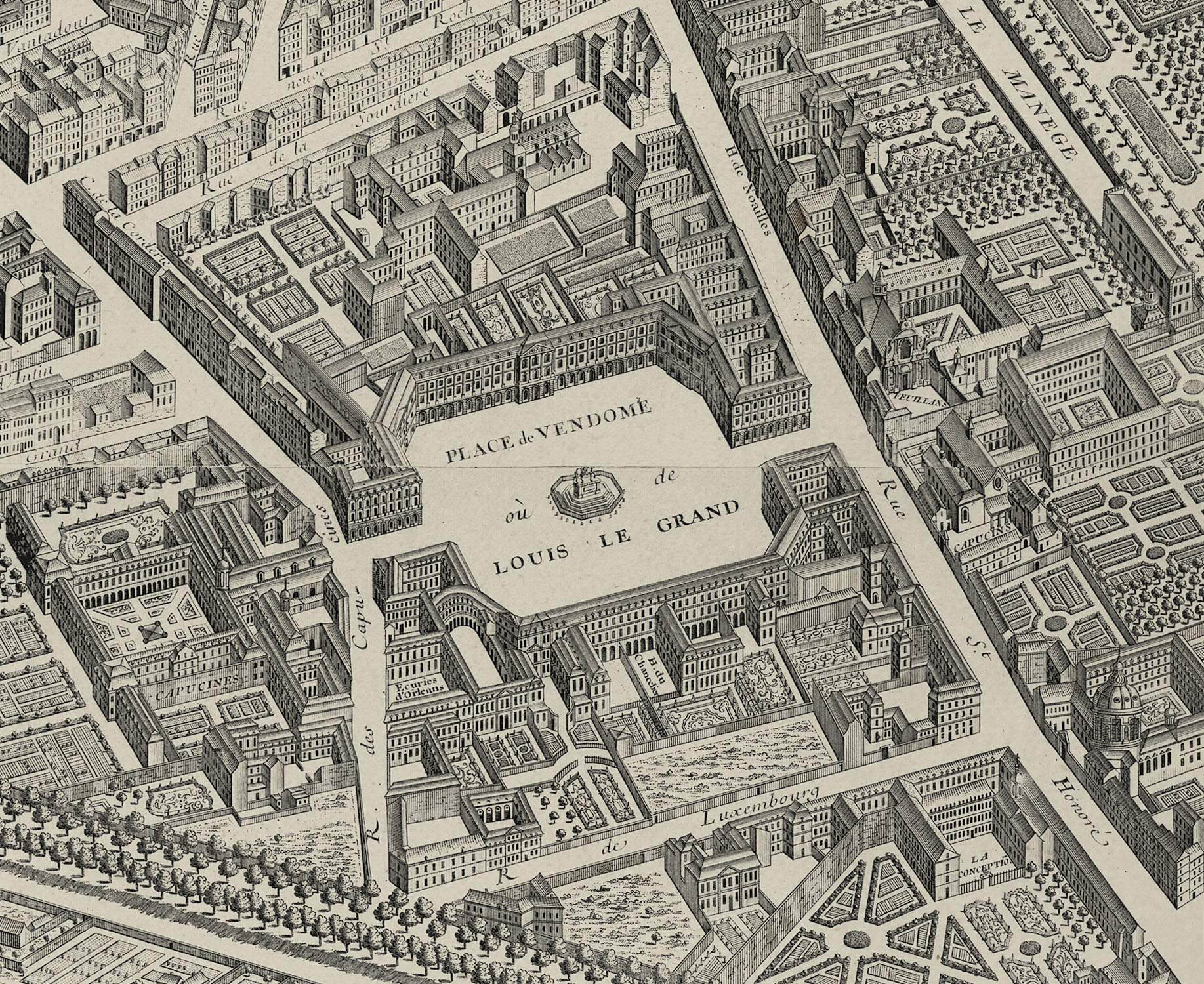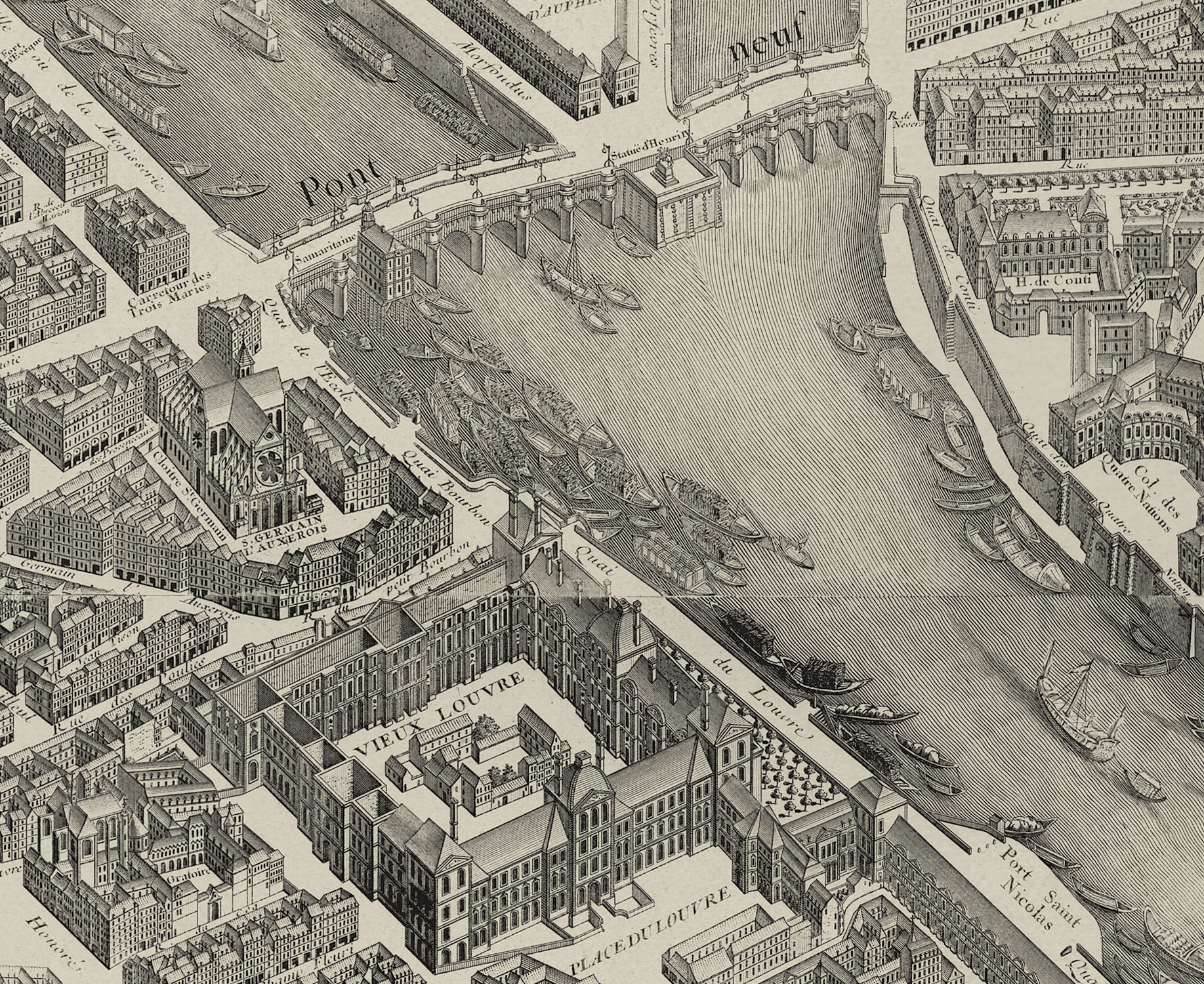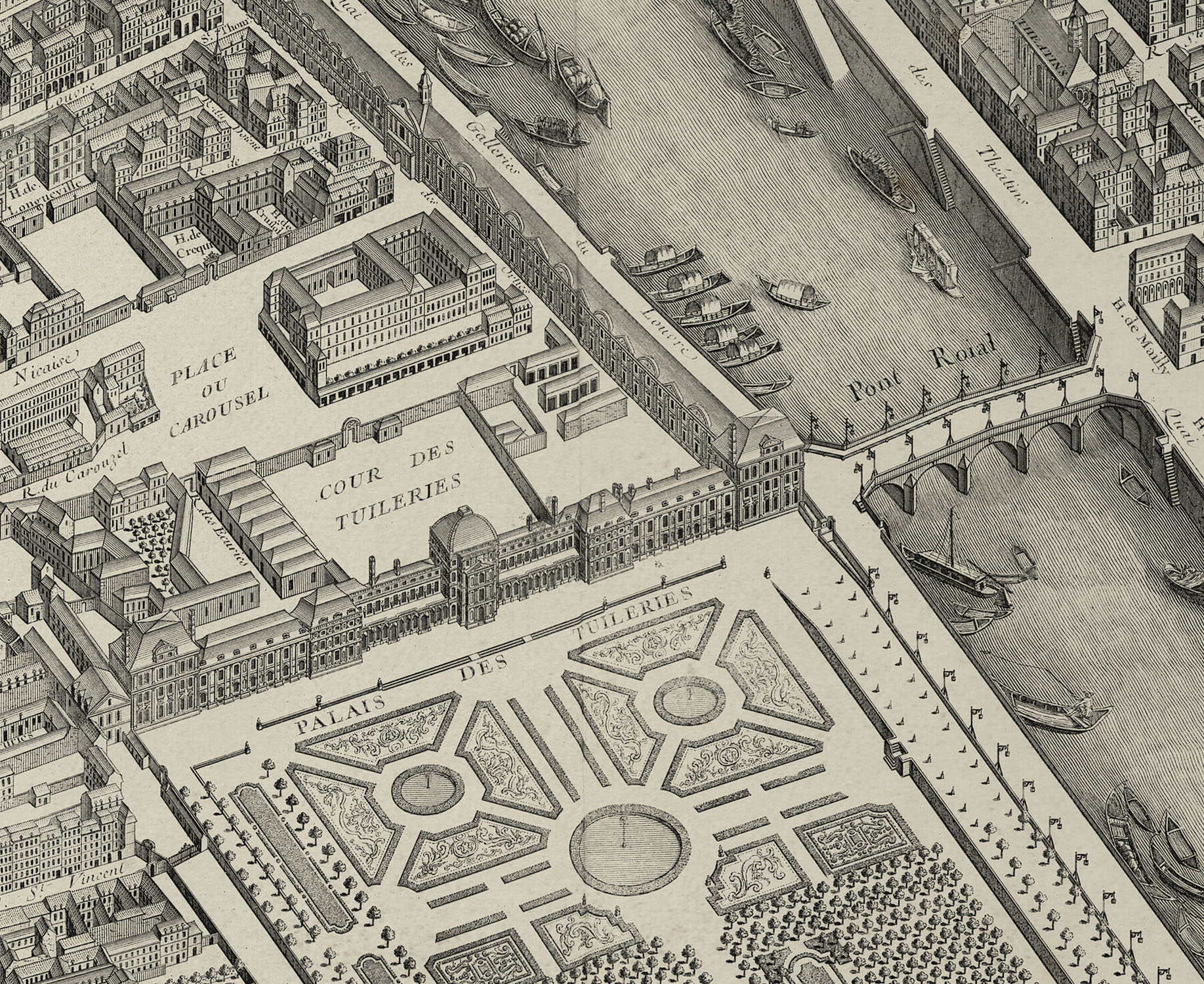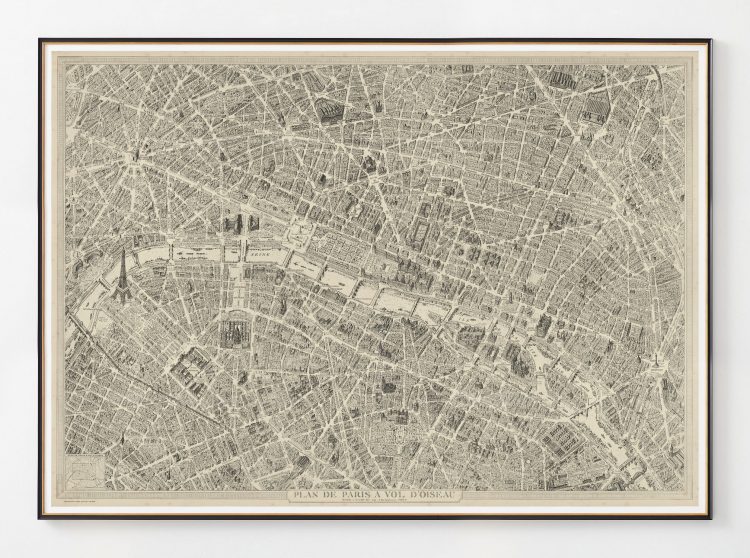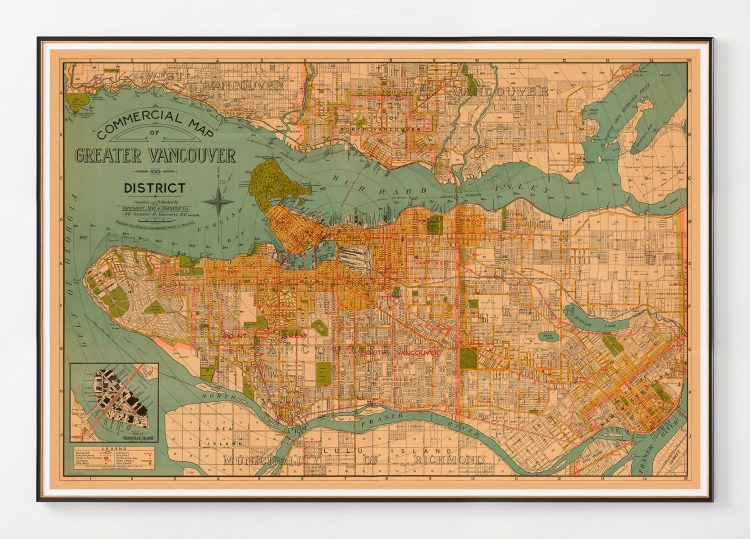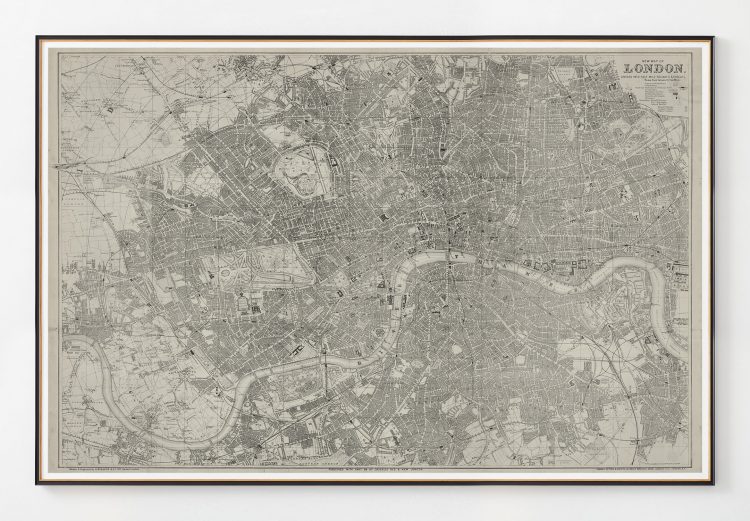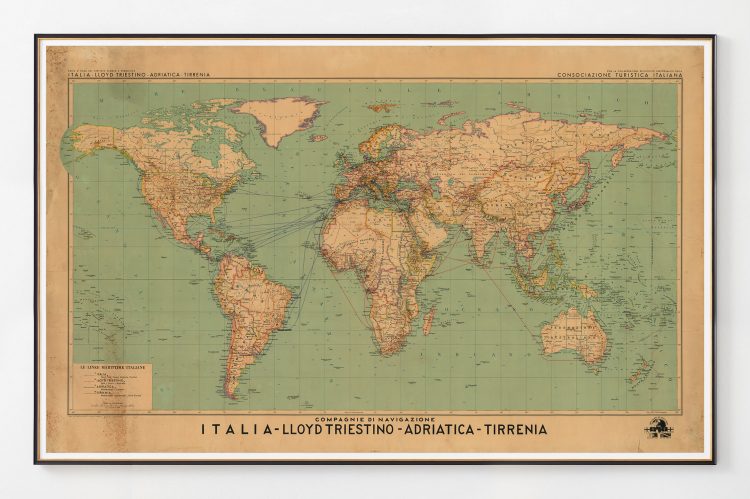Turgot 1734-1739 Plan de Paris
$287.98 – $580.98
This 1734 Paris map was originally printed in the form of a book and printed onto 20 double pages.
Art Print:
Printed on acid-free, fine art paper. Fine art papers offer the greatest archival stability with image permanence often approaching – or even exceeding – 100 years. (10 mil thickness)
Shipping:
$56 Anywhere in North America, other destinations require a quote. Email us
Turgot 1734-1739 Plan de Paris
This 1734 Paris map was originally printed in the form of a book and printed onto 20 double pages.
In 1734, Michel-Étienne Turgot, chief of the municipality of Paris as provost of merchants, decided to promote the reputation of Paris for Parisian, provincial or foreign elites by implementing a new plan of the city. He asked Louis Bretez, member of the Academy of Painting and Sculpture and professor of perspective, to draw up the plan of Paris and its suburbs.
By contract, he asked a very faithful reproduction with great accuracy. Louis Bretez, was allowed to enter into the mansions, houses and gardens in order to take measures and draw pictures. He worked for two years (1734-1736).
The plan is in approximately 1/400e scale and large (2.49 m * 3.18 m). In the eighteenth century, the trend was to abandon portraits of cities (inherited from the Renaissance) for a geometric plan, more technical and mathematical. But the plan de Turgot goes against this trend, by choosing the system of perspective cavaliere : two buildings of the same size are represented by two drawings of the same size, whatever the buildings that are close or distant. It is an isometric perspective.
The plan is oriented toward the southeast. It covers approximately the first eleven arrondissements.
In 1736, Claude Lucas, graver of the Academy of Sciences, created the 20 sheets of the plan. The plan was published in 1739, the prints were bound in volumes offered to the King, the members of the Academy, the Municipality and French foreign representations. The 20 engraved brass of the plan are kept by the Chalcography of the Louvre, where they are yet used now for re-printing with the same techniques that two centuries ago.

